
Closeup Of Twin Baby WhiteTailed Deer Fawns Standing In Wildflowers Minnesota Spring Captive
May 7, 2021 By: Lindsay Thomas Jr. So, you found an abandoned fawn and you're wondering what to do with it. You may have even rescued it, and now that you brought it home you are wondering who to call. Is there anyone who will take it to raise? What does it eat? Can you house-train it?
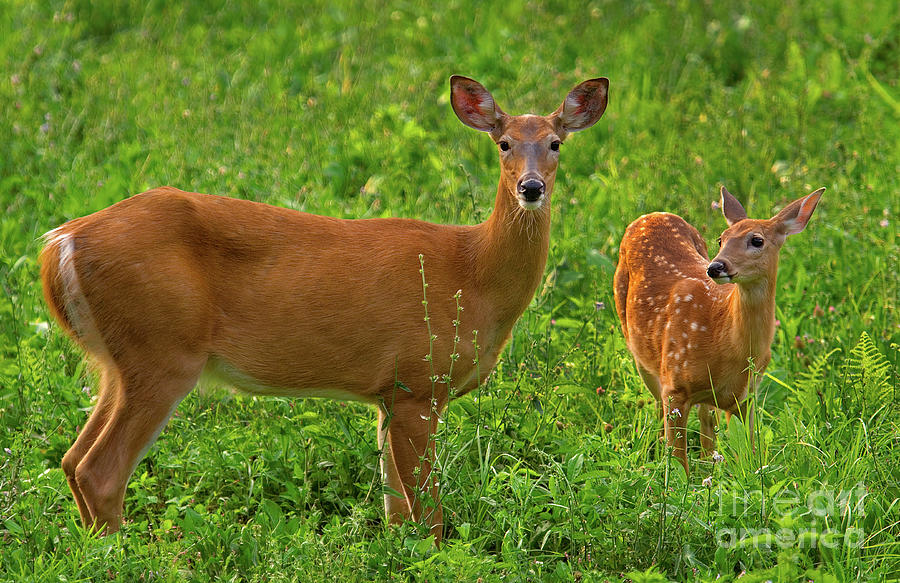
Whitetail Doe and Fawn Photograph by Gary W Griffen
It is rare for a doe to abandon a fawn - unless she herself has been killed by a car or predators. Magic: After a few days, the fawns will begin to follow the doe around. They start to become more familiar with the area and learn to communicate.

Whitetailed doe and fawn stock photo. Image of spots 189922140
1. Does drop their fawns approximately 200 days after conception 2. Fawns average 6-8 lbs. at birth Does bred as fawns (last year's) typically have a single fawn. 4. Does bred as 1.5 year old and older typically have twins and occasionally triplets 5. Newborn fawns typically can stand and nurse within 30 minutes 6.

Ann Brokelman Photography White Tailed Deer with fawns Sept 2016
Blaming Predators Most research, however, doesn't give predators a pass. Although predators rarely suppress deer herds by themselves, predation is part of life in most habitats. Dion, in fact, reports that over 90% of fawn-survival studies the past 30 years cited predation as the leading fawn killer.

Chital Deer and Fawn Photograph by Louise
A deer ( pl.: deer) or true deer is a hoofed ruminant mammal of the family Cervidae. The two main groups of deer are the Cervinae, including muntjac, elk (wapiti), red deer, and fallow deer; and the Capreolinae, including reindeer (caribou), white-tailed deer, roe deer, and moose.
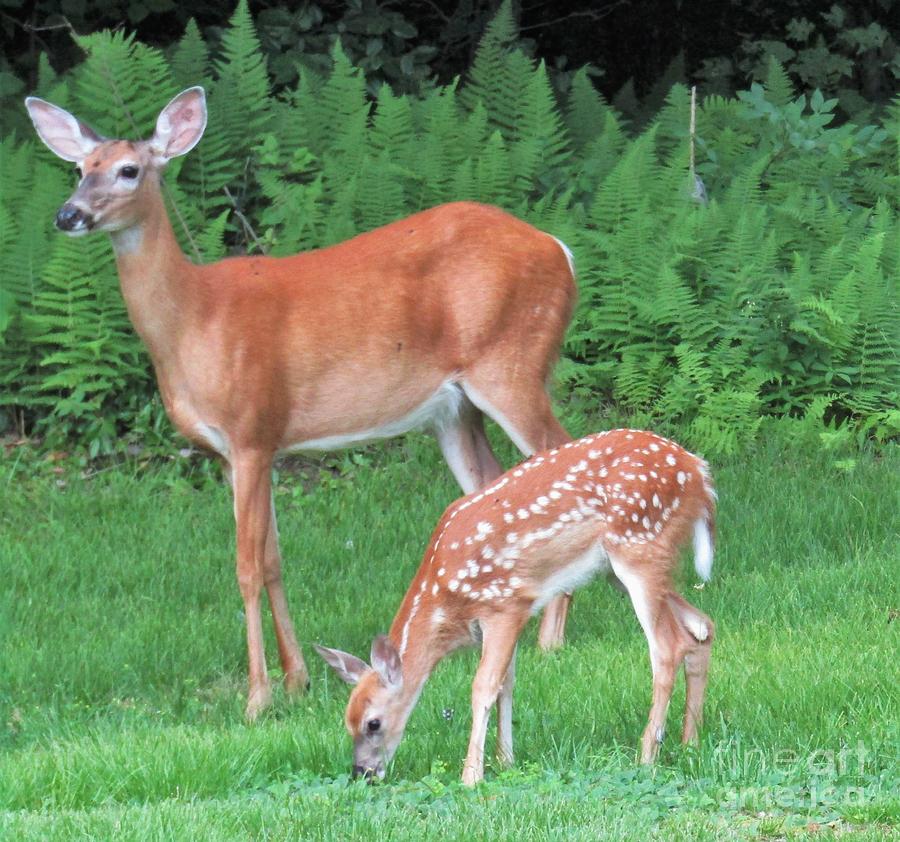
Doe and fawn Photograph by Sonner
The life cycle of deer begins in the fall during the rutting season, with gestation occuring during the winter months and the arrival of fawns in the spring. Spring is the best time for deer Read More » How Does a Mother Deer Find Her Fawn? After a mother deer gives birth, she will do everything in her power to protect the fawn from predators.
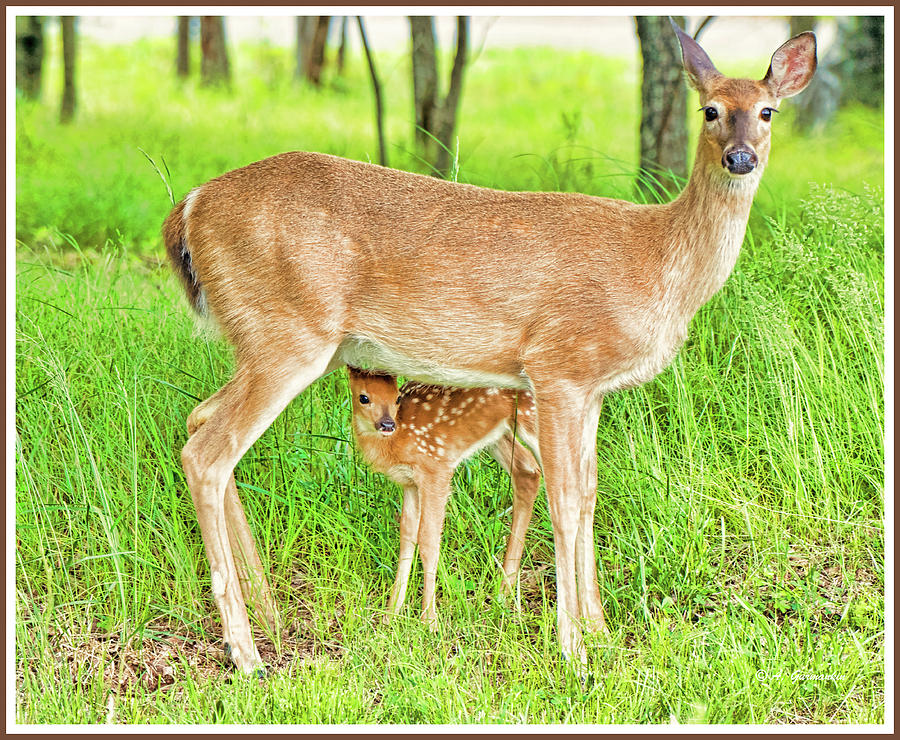
Whitetailed Deer, Doe And Fawn Photograph by A Gurmankin
All You Need To Know About White-Tailed Deer and Fawns. White-tail deer are native throughout North America and South America and can live up to 20 years old in the wild. The whitetail deer (Odocoileus virginianus) is named for its signature tail and the white underneath its belly, though there are 38 sub-species of whitetail deer..

Pin on Where the Wild Things Are...Surfari
White-tailed deer comprise the greatest distribution of large mammals in North America. They gain their name from the iconic white fur on their tails. Their fawns undergo physical and behavioral changes as they grow older, and their age can be determined by observing these characteristics.
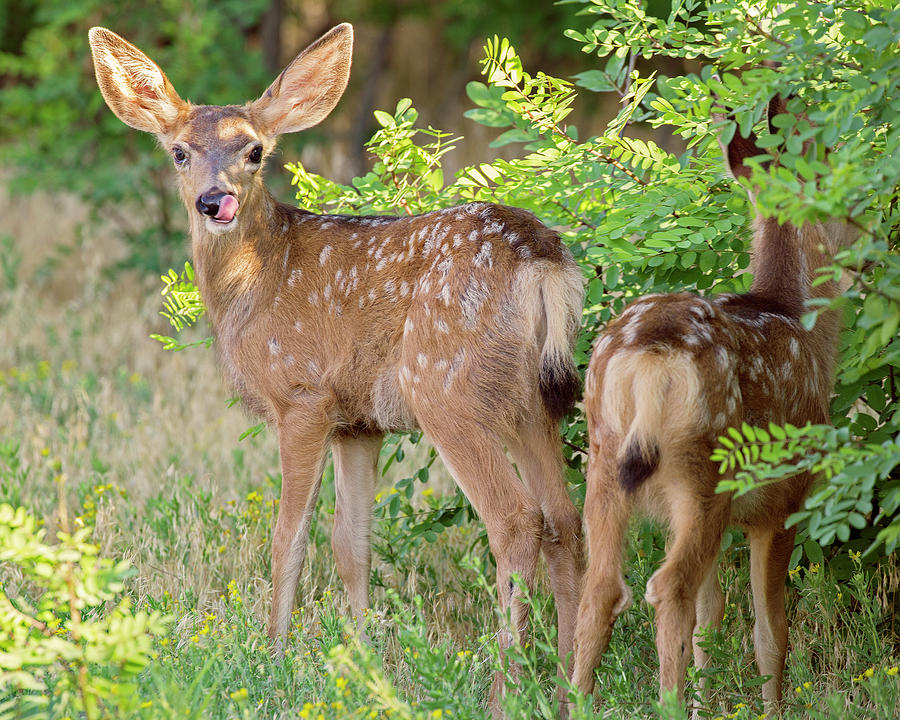
Mule Deer Fawns Photograph by Lowell Monke Pixels
Deer are mainly browsers, feeding on leaves, shoots, woody stems, shrubs, bushes or fruits. They also consume large quantities of forbs, mainly broad leaved, flowering plants, which are not grasses, sedges or rushes. Some grasses are grazed, along with some lichens and mosses.
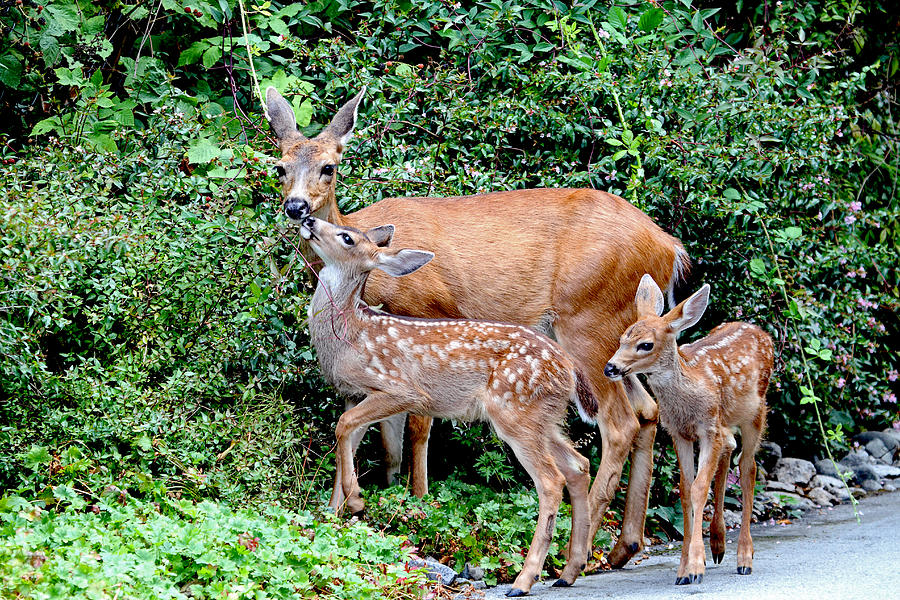
Twin Fawns And Mother Deer Photograph by Peggy Collins
Almost certainly never! White-tailed deer mate in the fall (October - December). The male deer (buck) plays no role in raising fawns. After the female deer (doe) gives birth to one or two fawns and nurses them, she leads them into secluded habitat within her familiar home range. Twin fawns can be separated by up to 200 feet.

Doe And Twin Fawns Photograph by Ed Hoppe Fine Art America
WDNR Changes Rehabilitation Rules for Deer. In 2021, when research indicated that white-tailed deer could become infected with the virus and could transmit it to other deer, the Wisconsin Department of Natural Resources (WDNR) required enhanced biosecurity for rehabilitators working with fawn, including mandatory release of the fawn before winter, during hunting season, and at an age where all.

Doe and fawn fallow deer, dama dama HighQuality Animal Stock Photos Creative Market
Female deer hide their newborn fawns in tall grass or brush and move some distance away to feed to avoid drawing predators to their offspring. With the proliferation of deer in suburban areas, sometimes this happens right in our own yards. The fawn simply waits in hiding until its mother returns.

Whitetail Deer Doe With Fawn Fine Art Photo Print For Sale Photos by Joseph C. Filer
If cold, multiple births, or doe fails to claim fawn (s) or they don't nurse: A. Tube with colostrum (cow/doe; goat/ewe) or give First Catch Fawn or allow fawn to nurse colostrum from bottle. B. Pull fawn and bottle raise (make sure it gets colostrum either via tubing or nursing from bottle) C. Graft to another doe.
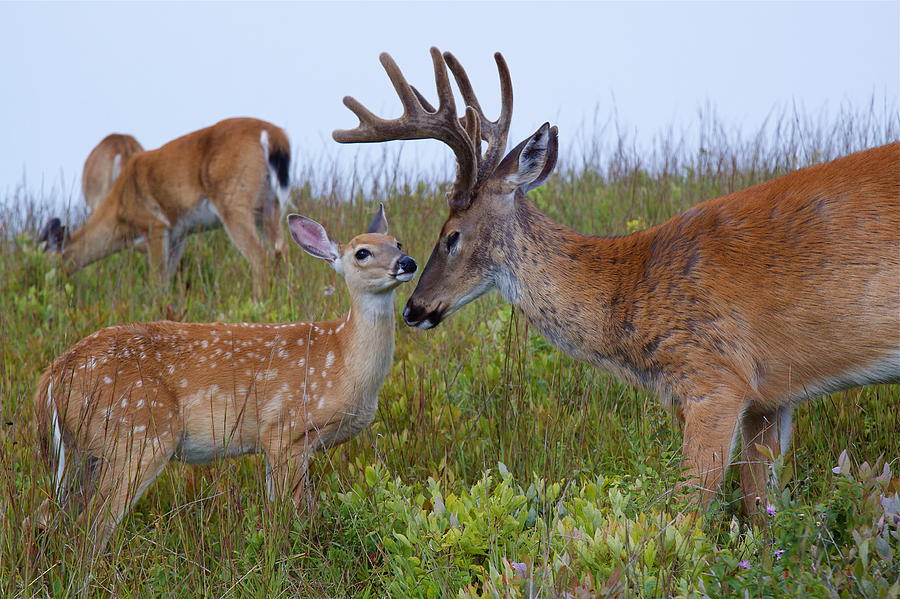
Whitetail Buck And Fawn Photograph by Tom Reichner
The fawns are able to walk within hours after being born, and run within a few days. But they are programmed to lie still rather than run for about three weeks. By the time they are about two.

Pictures doe and fawn Deer doe and Fawn — Stock Photo © gsagi 127684220
Preparing for Birth Mating season for most deer occurs between October and early December. Firstly, a mother doe will drive off any male offspring from the previous year. Male deer don't have any issues with attempting to mate with their own mother, so the doe takes no chances.
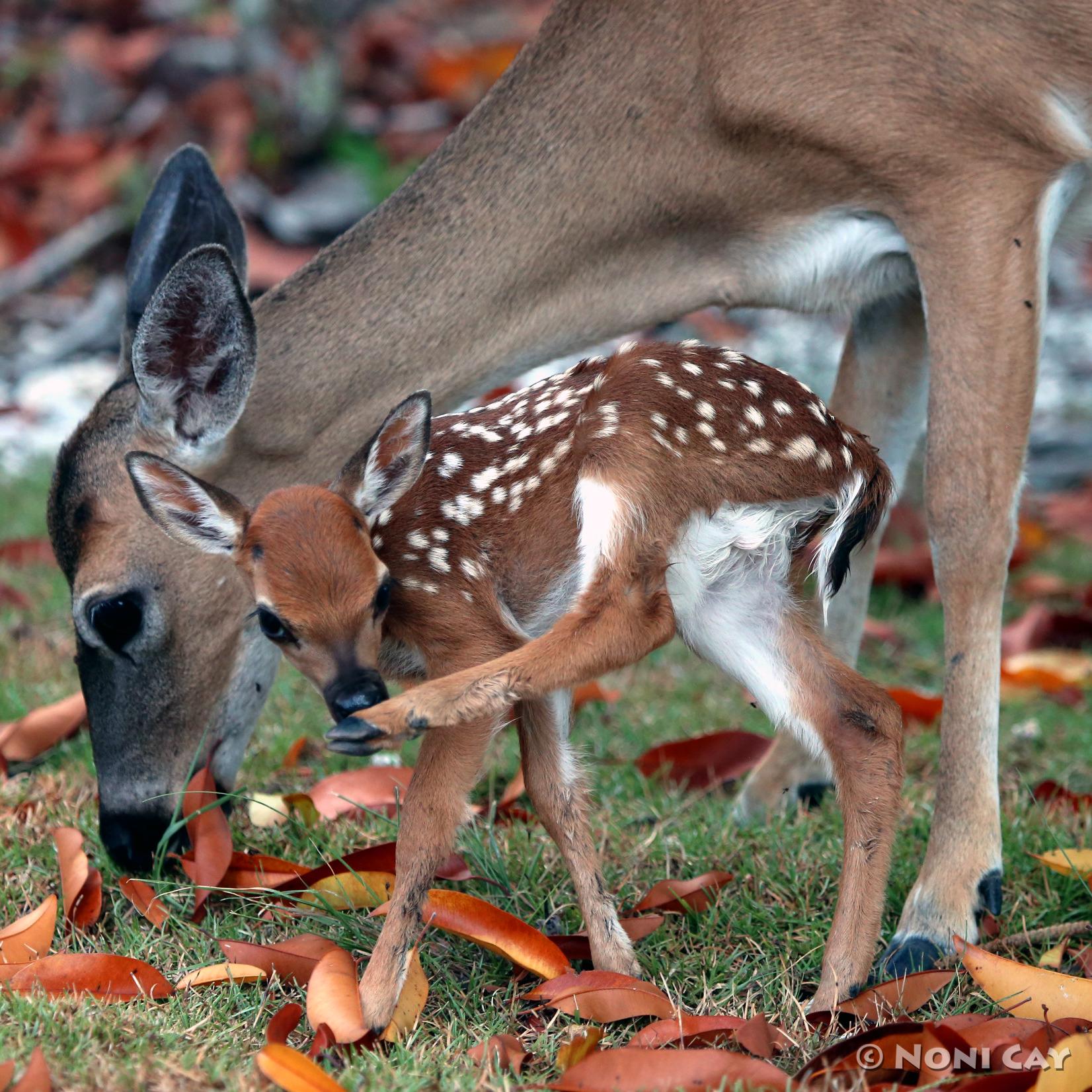
Fawn! Noni Cay Photography
Fawn. Body about as long as tall (square) Short neck and compact nose/head. Eyes look large for head. Doe fawns have a more rounded head shape between their ears. Buck fawns' heads appear flattened and may have visible antler nubs or "buttons". Harvest antlerless deer early in the season when differences between fawns and adult does are.